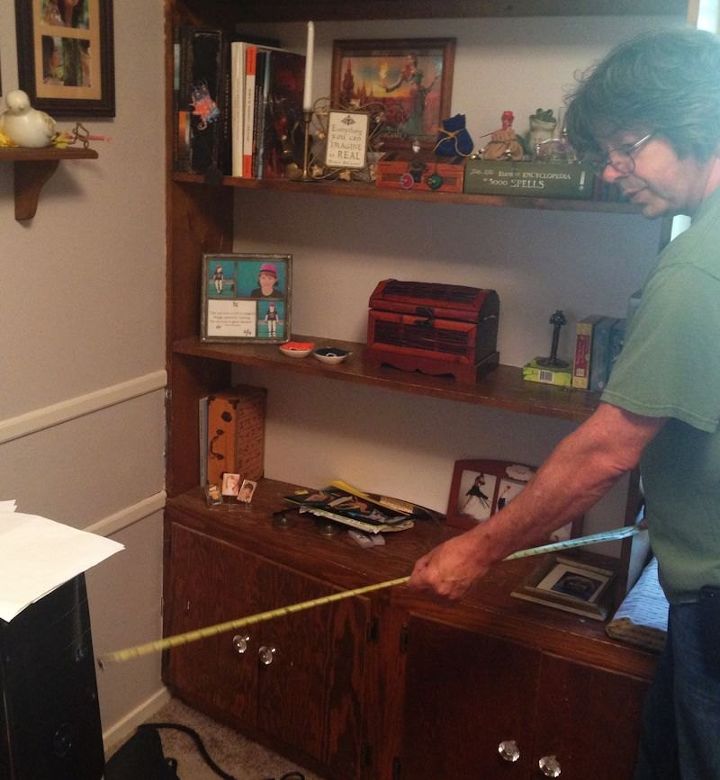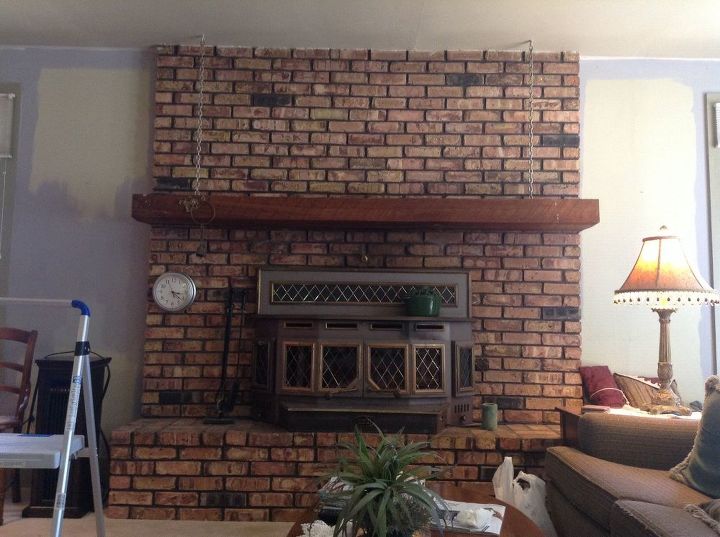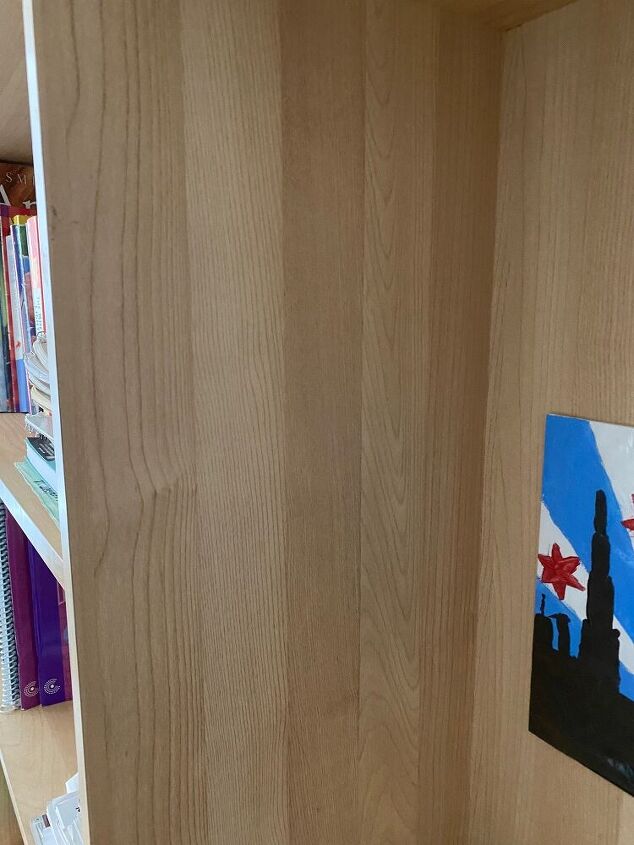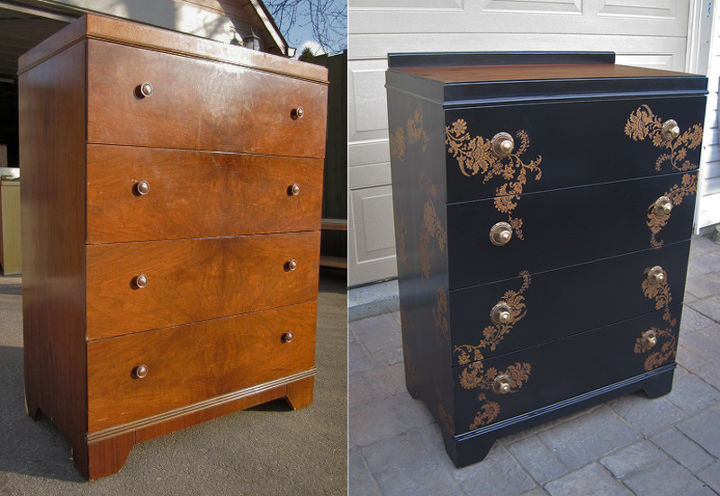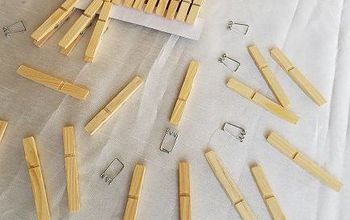What is the quickest, cheapest but durable way to to paint shelves?

-
Ok you asked alot of questions at once, however everyone need to know what type of wood this is?
 Janet Pizaro
on Oct 14, 2015
Helpful Reply
Janet Pizaro
on Oct 14, 2015
Helpful Reply -
-
I always go with paint with primer as it is one of the easiest available and durable solution.
 Interealtyexchange
on Oct 15, 2015
Helpful Reply
Interealtyexchange
on Oct 15, 2015
Helpful Reply -
-
I would sand first to remove the poly (?) finish, then I would prime so the wood grain does not bleed through. Then paint away with a light sanding inbetween coats. If you use a high quality cabinet paint and let it sure per directions, you should not have to use a poly over it for protection. If you do use a poly, make sure it is water based, otherwise it will yellow your paint. Good luck! I wish I had built-ins.
 Jocelyn Z
on Oct 15, 2015
Helpful Reply
Jocelyn Z
on Oct 15, 2015
Helpful Reply -
-
light sanding with 220 grit to break the surface tension of the varnish. if you can get a sprayer go that way. otherwise, use a foam roller about 6" wide and back brush if you have someone to help out or the time, as it will leave a texture behind. do at least 2 coats. Don't worry about making the first coat perfect. If you have a run or are not thrilled with it, then lightly sand with 220 grit again, tack rag the residue off, and do another coat. Three would not hurt if you have time. Let dry for several days before placing objects on it.
 Cheryle Fuller
on Oct 15, 2015
Helpful Reply
Cheryle Fuller
on Oct 15, 2015
Helpful Reply -
-
Well it kinda sounds like there are not many shortcuts. I may have to suck it up and just do the work. Appreciate all the input!
 Nancy at Craft Your Happiness
on Oct 15, 2015
Helpful Reply
Nancy at Craft Your Happiness
on Oct 15, 2015
Helpful Reply -
-
Sorry I don not like to comment unless I know all the info. Im not a second guesser,as I love to research before answering questions.Good Luck
 Janet Pizaro
on Oct 15, 2015
Helpful Reply
Janet Pizaro
on Oct 15, 2015
Helpful Reply -
-
You're probably going to get a lot of people suggesting chalk paint (or milk paint) since "no prep" is required. I've tried chalk paint and milk paint but I prefer a finer finish on my furniture than I can get with chalk or milk paint. My all-time favorite paint for furniture (and what I would recommend for your bookcases) is a good quality interior latex paint. The brand and sheen is strictly a matter of personal preference but I would recommend satin or semi-gloss for your bookcases. Either of those two sheens will be easy to wipe clean. Personally, for my furniture, I have not been at all happy with the all-in-one paints that are the primer/paint combo. It's thick and very rubbery feeling to me, and it seems to take an exceptionally long time to cure. I also don't think it is as durable. I prefer to use separate paint and primer products, but depending on where you purchase your paint, it is getting increasingly harder and harder to find interior paints without the primer already mixed in. If you end up with a paint that has primer already in it, I would still recommend using a separate primer first--a BONDING primer. Many people are going to tell you that sanding is an absolute must if you want your paint to stick. I am here to tell you that is just simply NOT true. I hate to sand. Hate it! If the finish on what I am painting is in relatively good shape, I don’t bother with stripping off the old finish and I don't sand just to ensure paint adhesion. Out of all the pieces of furniture I have painted (well in excess of 30--I've lost count!), I only stripped and sanded one piece and that's because the finish on it was really in bad, bad shape--all bubbly. Even though I don't sand, I have never had a problem getting the paint to stick, even long term. The majority of painted furniture in my house was painted 8 years ago and even endured being man-handled by movers during a relocation from one house to another. Every piece looks just as good today as they did the day I painted them. If you want to skip the sanding step, you need to thoroughly wipe every surface of the bookcases down with a "liquid sandpaper" (aka deglosser) product. Or, you could just lightly sand the shelves, since they will likely see the most abuse, and then wipe everything down with the liquid sandpaper. Another key to good adhesion is applying THIN coats of primer and paint and allowing adequate drying time between coats. Do not be tempted to rush it. If you put the primer and paint on heavy in order to "just get done," it will take forever to cure and you run the risk of having the paint chip, bubble or peel. I will caution that if you do decide to use latex paint, it can take up to 30 days, depending on weather, for latex paint to completely cure/harden. Until it is fully cured, you probably should be very careful placing anything on the shelves as books, nick-nacks etc., can stick and potentially pull the paint off when you move them. A clear protective coat is optional but if your bookcases will see a lot of wear and tear, you might opt to use it. I don't use a protective top coat on my furniture for several reasons. First, I don't like the way top coats I've tried change the look of the paint, especially white paint. Another reason I don't use it is we aren't particularly hard on our furniture so it doesn't get dinged or chipped very often. However, if it does, I find it is very simple to just touch up the piece with a dab or two of paint if there is no top coat on it. On a couple of occasions, I have elected to refresh just the tops of a coffee table and a sofa table I have by adding another thin coat of paint and that was very quick and easy to do since there was no top coat to contend with.
 Shari
on Oct 15, 2015
Helpful Reply
Shari
on Oct 15, 2015
Helpful Reply- See 1 previous
-
-
chalking painting is the way to go...little to no sanding..paint ...then seal it either with varnish or wax...and a masterpiece is created!!!
 Aligrigio
on Oct 15, 2015
Helpful Reply
Aligrigio
on Oct 15, 2015
Helpful Reply -
Related Discussions
Should I paint or stain my oak kitchen cabinets?
I was wondering if you could help me with something -- I have an entirely oak kitchen. I know it's the rage now to paint or gel stain cabinets. I've been considering ... See more
How to paint a metal front door?
How do I paint my front door? It's metal.
How to paint grout?
How do I paint grout to change the color? The grout is in great shape, but the color - meh.
How to whitewash a brick fireplace?
What is the best method to whitewash bricks surrounding a fireplace?
What is the best way to paint a laminate particle board bookshelf?
Hello Friends,I have a bookshelf which is quite old, however it is usable.. It has few marks and scratches, wanted to paint it. I may select the color Cherry brown wh... See more
DRESSER BEFORE AND AFTER: KEEP OR LOSE THE BACKBOARD?
Opinions Please! I got this very plain damaged dresser and was at a loss to what to do with it. I was inspired to glam it up. The top is stained and the finish is a b... See more
